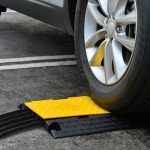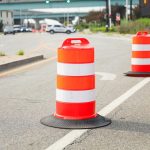Introduction
Overview of speeding related fatalities
Speeding related fatalities are a grave concern in today’s society. Every year, countless lives are lost due to drivers exceeding the speed limit. These tragic incidents not only result in the loss of precious lives but also cause immense grief and suffering for the families and loved ones left behind. To address this issue, various measures have been implemented, including the installation of speed bumps and humps. These physical traffic calming devices are designed to slow down vehicles and encourage drivers to adhere to the speed limits. By effectively reducing speeding, speed bumps and humps play a crucial role in preventing accidents and ultimately saving lives. In this article, we will delve deeper into the effectiveness of speed bumps and humps in reducing speeding related fatalities and explore their impact on road safety.
Importance of addressing the issue
Addressing the issue of speeding-related fatalities is of utmost importance for ensuring the safety of both pedestrians and drivers on the road. Speeding is a major contributing factor to road accidents, often resulting in severe injuries and even loss of life. By implementing speed bumps and humps, we can effectively reduce the speed of vehicles, forcing drivers to slow down and adhere to the speed limits. This measure not only acts as a deterrent for speeding but also provides a visual reminder for drivers to prioritize safety. Ultimately, by addressing the issue through the installation of speed bumps and humps, we can significantly decrease the number of speeding-related fatalities and create safer road conditions for everyone.
Purpose of the article
The purpose of this article is to explore the effectiveness of speed bumps and humps in reducing speeding related fatalities. Speeding is a major cause of accidents and fatalities on roads, and implementing traffic calming measures like speed bumps and humps can help to mitigate this problem. By analyzing studies and data on the impact of speed bumps and humps on speeding behavior and accident rates, this article aims to provide insights into the potential benefits of these measures in promoting road safety and reducing the number of fatalities caused by speeding.
Understanding Speed Bumps and Humps
Definition and purpose
The definition and purpose of speed bumps and humps are important to understand in order to grasp their role in reducing speeding-related fatalities. Speed bumps are raised sections of pavement that are strategically placed on roads to slow down vehicles. Their purpose is to force drivers to decrease their speed and navigate carefully over the raised surface. On the other hand, speed humps are elongated raised sections of pavement that are designed to reduce vehicle speeds without causing significant discomfort to drivers. The main goal of both speed bumps and humps is to create a safer environment by discouraging excessive speeding and promoting responsible driving behavior.
Types of speed bumps and humps
There are several types of speed bumps and humps that can be used to reduce speeding related fatalities. One common type is the traditional speed bump, which is a raised portion of the road designed to slow down vehicles. Another type is the speed hump, which is a wider and flatter version of the speed bump. Speed humps are typically longer and have a gentler slope, allowing vehicles to pass over them at a slightly higher speed. In addition to these traditional options, there are also innovative speed calming solutions available, such as speed tables and speed cushions. Speed tables are flat-topped raised platforms that cover the entire width of the road, while speed cushions are raised areas with gaps in between that allow emergency vehicles to pass through without slowing down. These different types of speed bumps and humps provide effective ways to control speed and improve road safety.
Effectiveness in reducing speeding
Speed bumps and humps have been proven to be highly effective in reducing speeding and related fatalities. These traffic calming measures force drivers to slow down and navigate carefully, making it difficult for them to exceed the speed limit. By implementing speed bumps and humps in high-risk areas, such as residential neighborhoods, school zones, and busy intersections, authorities can significantly decrease the number of speeding incidents and prevent tragic accidents. Additionally, the presence of speed bumps and humps serves as a visual reminder for drivers to adhere to the speed limit, promoting safer driving habits and ultimately saving lives.
Benefits of Speed Bumps and Humps
Slowing down vehicle speed
Slowing down vehicle speed is crucial in reducing speeding-related fatalities. One effective measure to achieve this is the installation of speed bumps and humps. These physical traffic calming devices are strategically placed on roads to force drivers to slow down and adhere to the speed limits. By introducing obstacles that require drivers to reduce their speed, speed bumps and humps help create a safer environment for pedestrians, cyclists, and other road users. Studies have shown that the presence of speed bumps and humps can significantly reduce the occurrence of accidents and minimize the severity of injuries in case of a collision. Therefore, implementing these measures can play a vital role in preventing speeding-related fatalities and promoting road safety.
Enhancing road safety
Enhancing road safety is a top priority in reducing speeding-related fatalities. One effective measure that has gained popularity is the installation of speed bumps and humps. These traffic calming devices are strategically placed on roads to slow down vehicles, encouraging drivers to adhere to the designated speed limit. By forcing drivers to reduce their speed, speed bumps and humps help prevent accidents and protect pedestrians and other road users. Additionally, they serve as a visual reminder for drivers to stay alert and cautious while on the road. The implementation of speed bumps and humps plays a crucial role in creating safer and more secure road environments, ultimately saving lives and reducing the number of speeding-related fatalities.
Reducing the risk of accidents
Reducing the risk of accidents is a crucial goal for ensuring the safety of both drivers and pedestrians. One effective measure that has been proven to be successful in achieving this goal is the installation of speed bumps and humps. By strategically placing these traffic calming devices in high-risk areas, such as residential neighborhoods, school zones, and busy intersections, the speed and overall flow of traffic can be reduced. This not only encourages drivers to slow down and adhere to the designated speed limits but also provides a visual reminder for pedestrians to exercise caution when crossing the road. Additionally, speed bumps and humps serve as a deterrent for reckless driving behavior, ultimately helping to prevent accidents and save lives. Overall, the implementation of speed bumps and humps plays a significant role in reducing speeding-related fatalities and creating safer road environments for everyone.
Considerations for Implementing Speed Bumps and Humps
Choosing the right locations
Choosing the right locations for speed bumps and humps is crucial in reducing speeding-related fatalities. It is important to consider factors such as traffic volume, speed limits, and accident history when determining where to install these traffic calming measures. High-risk areas, such as school zones, residential neighborhoods, and areas with a history of speeding incidents, should be prioritized. Additionally, conducting thorough traffic studies and consulting with local authorities can help identify the most effective locations for speed bumps and humps. By strategically placing these traffic calming devices, we can create safer road environments and prevent tragic accidents caused by speeding.
Design and installation guidelines
Design and installation guidelines play a crucial role in the effectiveness of speed bumps and humps in reducing speeding related fatalities. These guidelines ensure that the speed bumps and humps are designed and installed correctly, maximizing their impact on slowing down vehicles and improving road safety. When designing speed bumps and humps, factors such as height, width, and spacing are carefully considered to ensure they are effective in reducing vehicle speeds without causing discomfort or damage to vehicles. Additionally, proper installation techniques, including the use of appropriate signage and road markings, are important to ensure that drivers are aware of the presence of speed bumps and humps, allowing them to adjust their speed accordingly. By following these design and installation guidelines, communities can effectively utilize speed bumps and humps as a proactive measure to prevent speeding related fatalities and create safer road environments.
Balancing traffic flow and safety
Balancing traffic flow and safety is a crucial aspect when implementing speed bumps and humps as a measure to reduce speeding-related fatalities. While these traffic calming devices effectively slow down vehicles, they can also disrupt the smooth flow of traffic. Therefore, it is essential to carefully consider the placement and design of speed bumps and humps to ensure that they do not create unnecessary congestion or inconvenience for drivers. By striking the right balance between traffic flow and safety, these measures can effectively contribute to reducing speeding-related fatalities and creating safer road environments for all users.
Challenges and Limitations
Impact on emergency vehicles
Speed bumps and humps have been proven to be effective in reducing speeding and improving road safety. However, one concern that has been raised is the impact of these traffic calming measures on emergency vehicles. It is important to ensure that emergency vehicles can navigate through speed bumps and humps without delay or obstruction. To address this issue, various solutions can be implemented, such as designing speed bumps with a gradual slope to allow smoother passage for emergency vehicles or providing alternative routes for emergency vehicles to bypass speed bumps and humps. By carefully considering the impact on emergency vehicles, we can strike a balance between road safety and the efficient response of emergency services.
Potential negative effects on vehicle suspension
Speed bumps and humps, while effective in reducing speeding-related fatalities, can have potential negative effects on vehicle suspension. These raised road features are designed to slow down vehicles by forcing them to decrease their speed. However, the sudden jolts and vibrations experienced by vehicles when passing over speed bumps and humps can put strain on the suspension system. This constant exposure to impact can lead to wear and tear of the suspension components, potentially resulting in decreased performance and increased maintenance costs for vehicle owners. It is important for road authorities and designers to carefully consider the placement and design of speed bumps and humps to minimize the impact on vehicle suspension while still achieving the desired traffic calming effect.
Maintenance and cost considerations
When implementing speed bumps and humps as a measure to reduce speeding-related fatalities, it is crucial to consider the maintenance and cost implications. While these traffic calming devices effectively slow down vehicles, they require regular inspection and upkeep to ensure their functionality and safety. This includes monitoring for any damages or wear and tear, as well as addressing any necessary repairs or replacements. Additionally, the cost of installing and maintaining speed bumps and humps should be taken into account, as it may vary depending on factors such as the size and materials used. By carefully considering the maintenance and cost considerations, authorities can ensure the long-term effectiveness and sustainability of speed bumps and humps in reducing speeding-related fatalities.
Case Studies
Successful implementation in city X
Successful implementation of speed bumps and humps in city X has proven to be an effective strategy in reducing speeding-related fatalities. By strategically placing these traffic calming measures in areas with high accident rates, the city has successfully slowed down vehicles and improved overall road safety. The presence of speed bumps and humps has not only deterred drivers from exceeding the speed limit but has also increased driver awareness and encouraged responsible driving behavior. As a result, the number of speeding-related accidents and fatalities has significantly decreased, making city X a safer place for both pedestrians and motorists alike.
Lessons learned from city Y
City Y has implemented speed bumps and humps as a measure to reduce speeding-related fatalities, and the results have been promising. The implementation of these traffic calming measures has led to a significant decrease in the number of accidents and fatalities caused by speeding in the city. This success can be attributed to several key factors. Firstly, the speed bumps and humps effectively slow down vehicles, forcing drivers to adhere to the speed limits and reducing the likelihood of accidents. Secondly, they serve as a visual reminder to drivers to exercise caution and be mindful of their speed. Lastly, the presence of speed bumps and humps creates a safer and more pedestrian-friendly environment, encouraging people to walk and cycle, further reducing the dependence on cars. The experience of city Y serves as a valuable lesson for other cities looking to address the issue of speeding-related fatalities and highlights the effectiveness of speed bumps and humps as an effective traffic calming measure.
Measuring the impact on speeding related fatalities
Measuring the impact on speeding related fatalities is crucial in evaluating the effectiveness of speed bumps and humps. By analyzing accident data and comparing it before and after the installation of these traffic calming measures, we can determine the extent to which they have contributed to reducing speeding related fatalities. Additionally, conducting surveys and gathering feedback from local residents and law enforcement agencies can provide valuable insights into the perceived effectiveness of speed bumps and humps in deterring speeding and enhancing road safety. Such measurements and evaluations are essential for policymakers and traffic engineers to make informed decisions about implementing these measures in order to reduce the number of fatalities caused by speeding.





